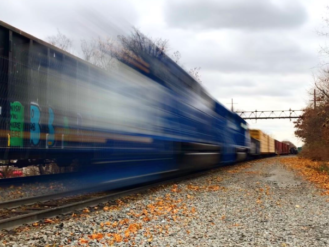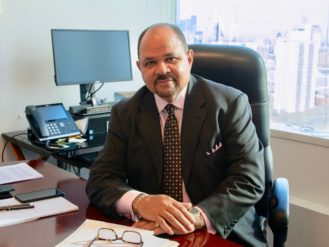How the Clampdown on Uber Affects Brooklyn
The costs and benefits hit home here and in Queens, where struggling drivers live but many residents lack mass transit
A cab driver outside City Hall spoke to a crowd rallying in favor of the new regulations (Photos by Anurag Papolu)
City Hall chambers were overflowing Wednesday afternoon as City Council members voted overwhelmingly to pass a package of five bills to regulate Uber and other ride-hailing companies, making New York the first large U.S. city to cap the growth of new for-hire vehicles and guarantee the drivers a minimum wage.
The legislation is an effort to freeze the disruption caused by the explosive growth of for-hire vehicles on the road: 100,000, up from 63,000 in 2015. The sudden abundance of cars has undermined the livelihoods of drivers, six of whom have committed suicide in recent months, as well as increased traffic congestion and vehicle emissions.
The costs and benefits of the new laws will disproportionately affect Brooklyn and Queens, given their geographic sprawl and diverse populations. On the one hand, the growth in for-hire vehicles (FHVs) has been a boon to residents of far-flung neighborhoods, often remote from mass transit, and to people of color who have often been discriminated against by yellow cabs.
But the two boroughs are also home to the majority of drivers, with 35% residing in Queens and 24% in Brooklyn, according to the Taxi and Limousine Commission (TLC). The rise of Uber and Lyft have devastated the yellow-cab business as well, sending the value of a taxi medallion from $1 million to less than $200,000.
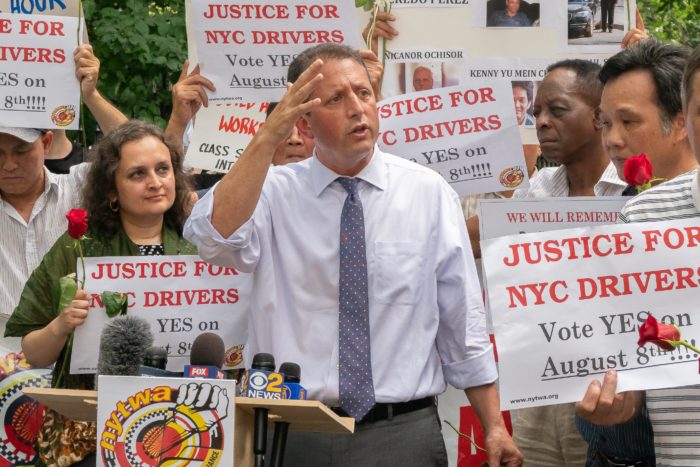
Brad Lander, City Council member from Brooklyn, sponsored one of the bills and supported the others
“I want the people in my district who rely on for hire vehicles to have good service. And I want the drivers who I represent and citywide to be able to earn a living,” said Brad Lander, a City Council member from Brooklyn (District 39), who sponsored the minimum-wage bill and voted in favor of the others. He said the bills balance the needs of passengers and drivers. “It’s a big topic, with a lot of competing interests,” he explained in a 1,026-word e-mail to his constituents on the day of the vote. Lander cited projections that wait times for cars may increase only 12 to 15 seconds and fares could rise by less than 5%.
The legislation, once signed by Mayor de Blasio, will set a wage floor that ensures drivers earn at least $17.22 an hour and will cap the number of FHVs for one year, while the TLC studies the impact of the services as a basis for deciding future regulations. A report commissioned by the TLC in July said that its proposal for raising the wage floor “would increase driver net earnings (after expenses) by 22.5%, or an average of $6,345 per year among the 85% of drivers who would get increases.” The new legislation will also waive licensing fees for taxis and FHVs that are wheelchair-accessible.
“We are pausing the issuance of new licenses in an industry that has been allowed to proliferate without any appropriate check or regulation,” said Corey Johnson, the City Council Speaker, before the vote. The council’s action paralleled its legislation in July to keep tabs on that other shared-economy disrupter, Airbnb, by requiring online home-rental services to provide the names and addresses of hosts to the city on a monthly basis. While Airbnb has brought new income to homeowners, the hotel industry says it hurts business and costs jobs.
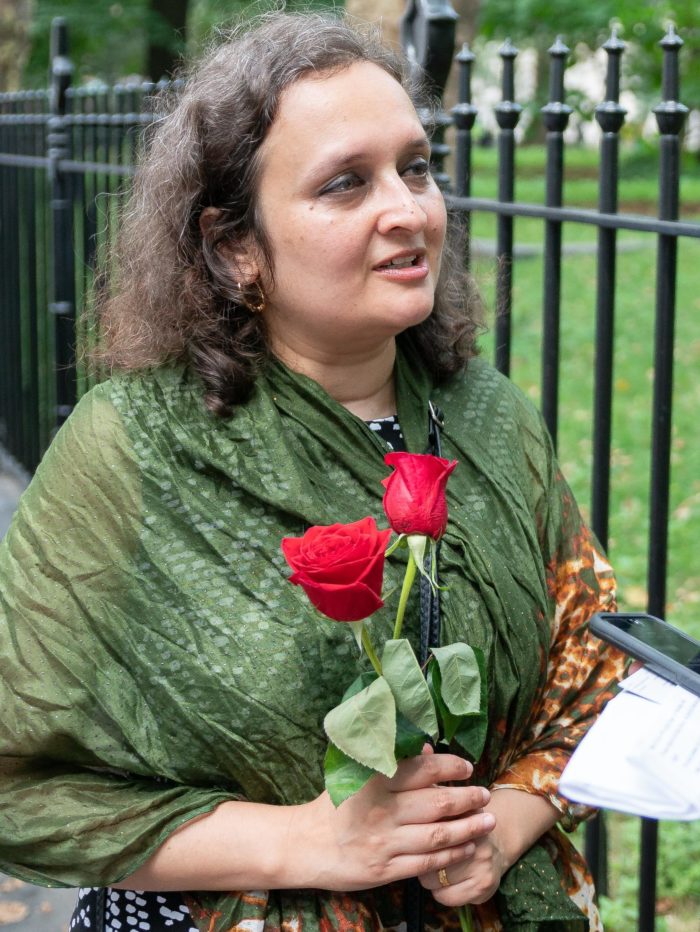
“Our members can tell you there’s not enough work,” said Bhairavi Desai, the head of the New York Taxi Workers Alliance
As with the Airbnb battle, the vote on car-hailing services followed one of the most spirited public-policy debates in years. Critics of the ride-share cap proposal said it’s a bad idea to constrain alternatives to New York’s dysfunctional public-transit system. At a rally last week, when there was still hope of stopping the bill, they warned what would happen if a cap was put in place. “Overnight, North Brooklyn will become a transit desert,” said Elaine Brodsky, chairperson of the North Brooklyn Chamber of Commerce.
The issue is particularly sensitive in North Brooklyn because of the looming, 15-month shutdown of the L train for tunnel repairs. Brodsky said the city needs a “robust network of transit, rideshare, bikeshare, ferries, and more” to pick up the slack.
In the run-up to the vote, ride-hailing companies, led by Uber, sought to stimulate opposition to the plan. New Yorkers opening the Uber app saw a message headlined “Arriving now: Higher prices and increased wait times.” Civil rights organizations including the Rev. Al Sharpton’s National Action Network and the Urban League opposed the legislation on the grounds that the ride-hailing companies have provided new options for people who have traditionally been discriminated against.
“These sweeping cuts to transportation will bring New Yorkers back to an era of struggling to get a ride, particularly for communities of color and in the outer boroughs,” said Joseph Okpaku, vice president of public policy at Lyft. “We will never stop working to ensure New Yorkers have access to reliable and affordable transportation in every borough.”
Danielle Filson, a spokesperson for Uber, shared a similar statement. “The city’s 12-month pause on new vehicle licenses will threaten one of the few reliable transportation options while doing nothing to fix the subways or ease congestion,” she said. “We take the speaker at his word that the pause is not intended to reduce service for New Yorkers and we trust that he will hold the TLC accountable, ensuring that no New Yorker is left stranded.”
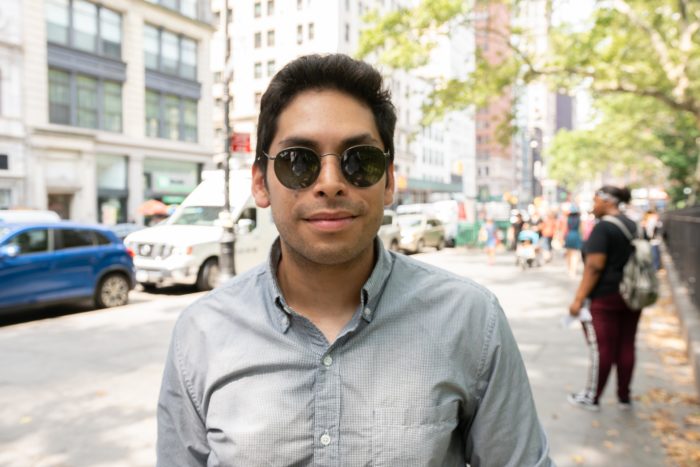
Andres Gonzalez, 33, a driver who lives in Astoria, Queens, said he has seen the industry “change drastically” since the arrival of Uber and Lyft. A driver used to be able to make a middle-class living driving as few as four days a week, he said. Gonzalez currently drives seven days a week, working for the two ride-hailing services as well as a traditional car service
Uber has plans for how it’s going to adapt to the cap. The pause places a limit on the number of licensed vehicles, but not on the number of licensed drivers, explained a spokesperson from Uber. One way that Uber plans to make this work is by taking advantage of the many licensed vehicles that sit idle throughout the week. The company would recruit drivers to keep those cars on the road longer.
The company also plans to recruit drivers in traditional car-service companies that aren’t currently affiliated with Uber. A spokesperson told The Bridge that of 121,840 registered for-hire vehicles industry-wide, ride-hailing apps connect to only about 80,000 of them.
Among the biggest supporters of the new measures are for-hire drivers, who argue that there are already too many for-hire vehicles on city streets, spreading the work too thin for traditional taxis and app-based drivers. “Our members can tell you there’s not enough work,” said Bhairavi Desai, the head of the New York Taxi Workers Alliance, which organized to pass the bills. She said drivers’ cars are empty 42% of the time they’re on the road, echoing similar estimates.
Since drivers are considered independent contractors, they’re not currently covered by minimum-wage laws. The new wage floor is calculated to pay drivers a minimum of $15 after expenses, equivalent to the New York State minimum-wage level that takes effect at the end of the year. “Why should that make Uber and Lyft go belly-up, that they have to meet the most basic of labor standards to pay the drivers?,” asked Desai. After the vote, Desai led a buoyant group of supporters outside City Hall, where they celebrated their victory.
In the nearby Financial District, an Uber driver just hearing of the bills’ passage gave a mixed review. The 32-year-old driver from Crown Heights, who asked to be identified only as “Junior,” said his income varies widely from day to day, depending on his luck in landing lucrative rides. The new wage floor would help even out his revenue, but the cap on new cars didn’t make sense to him “because there’s so many people that need to get around.”
Before driving for Uber, Junior drove four years for an ambulette service, which paid far less, he said. He drives 40 to 45 hours each week, and likes the flexibility of choosing his own hours. The first among his circle of friends to drive for Uber, he has persuaded some of them to join as drivers. The change he’d really like to see is Uber charging drivers a lower commission. Currently Uber charges about 25% for the app service, but additional fees can reportedly push the effective portion higher.
“What is astonishing about the current legislation is how tepid so much of it actually is, and how ferociously it was fought by the companies involved,” observed New York Times columnist Ginia Bellafante after the vote. “We are a long way from figuring out how to disrupt disruption.”






